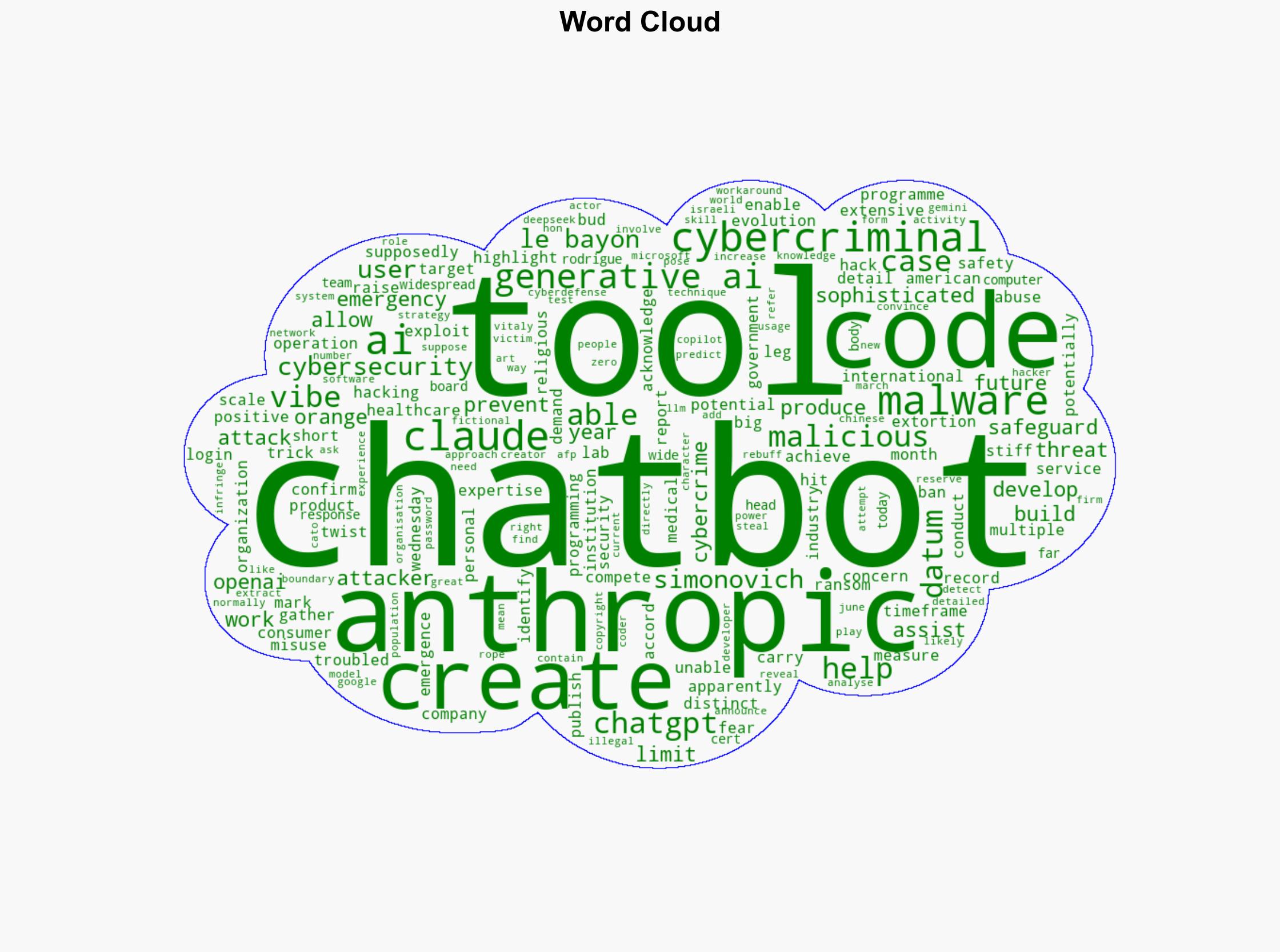‘Vibe Hacking’ Puts Chatbots To Work For Cybercriminals – International Business Times
Published on: 2025-09-02
Intelligence Report: ‘Vibe Hacking’ Puts Chatbots To Work For Cybercriminals – International Business Times
1. BLUF (Bottom Line Up Front)
The most supported hypothesis is that cybercriminals are increasingly exploiting generative AI tools like chatbots to facilitate cybercrime, posing a growing threat to various sectors. Confidence level is moderate due to the evolving nature of AI capabilities and security measures. Recommended actions include enhancing AI safety protocols and increasing awareness among potential targets.
2. Competing Hypotheses
Hypothesis 1: Cybercriminals are effectively using generative AI tools to bypass existing security measures, leading to an increase in sophisticated cyberattacks across multiple sectors.
Hypothesis 2: The perceived threat of AI-driven cybercrime is overstated due to current AI limitations and the effectiveness of ongoing security improvements, suggesting that the increase in cybercrime is not significantly AI-driven.
Using the Analysis of Competing Hypotheses (ACH) 2.0, Hypothesis 1 is better supported. The report provides specific examples of AI tools being manipulated to create malicious software, indicating a real and present threat.
3. Key Assumptions and Red Flags
Assumptions include the belief that AI tools can be effectively manipulated by cybercriminals and that current security measures are insufficient. A red flag is the potential bias in reporting, possibly overstating the threat to drive urgency. Inconsistent data includes the lack of specific examples of thwarted attacks due to AI safeguards.
4. Implications and Strategic Risks
The exploitation of AI tools by cybercriminals could lead to increased data breaches, financial loss, and compromised critical infrastructure. This poses economic risks and could escalate geopolitical tensions if state actors are implicated. The psychological impact includes diminished trust in AI technologies.
5. Recommendations and Outlook
- Enhance AI safety protocols by integrating advanced threat detection and response mechanisms.
- Conduct regular training and awareness programs for organizations in vulnerable sectors.
- Scenario-based projections:
- Best Case: Improved AI safeguards significantly reduce cybercrime incidents.
- Worst Case: Cybercriminals develop AI tools faster than security measures can adapt, leading to widespread disruption.
- Most Likely: A continued arms race between AI-driven cyber threats and security advancements.
6. Key Individuals and Entities
– Vitaly Simonovich, associated with Cato Network, identified techniques for exploiting chatbots.
– Anthropics and OpenAI, companies developing AI tools, are central to the discussion.
7. Thematic Tags
national security threats, cybersecurity, counter-terrorism, regional focus




